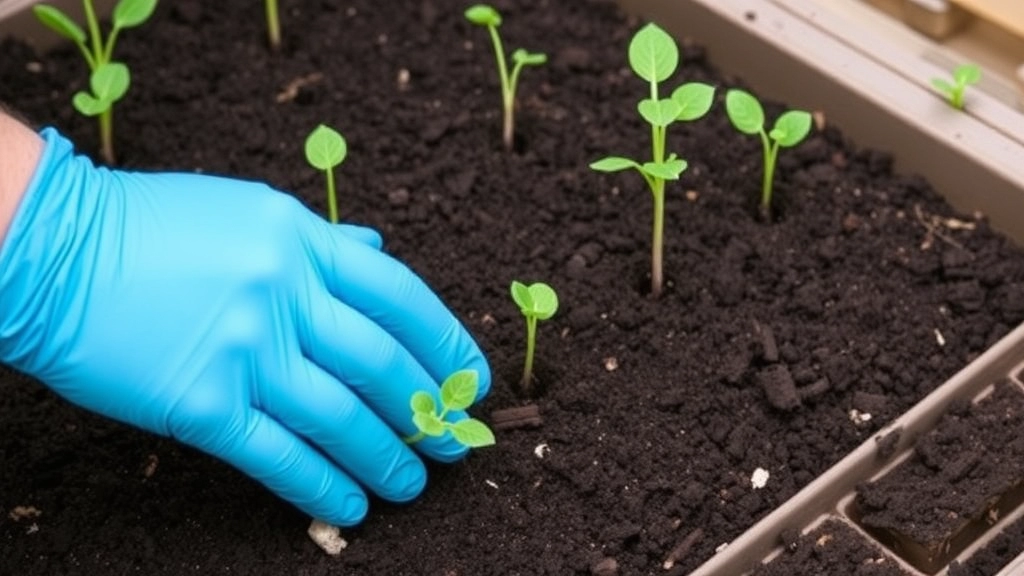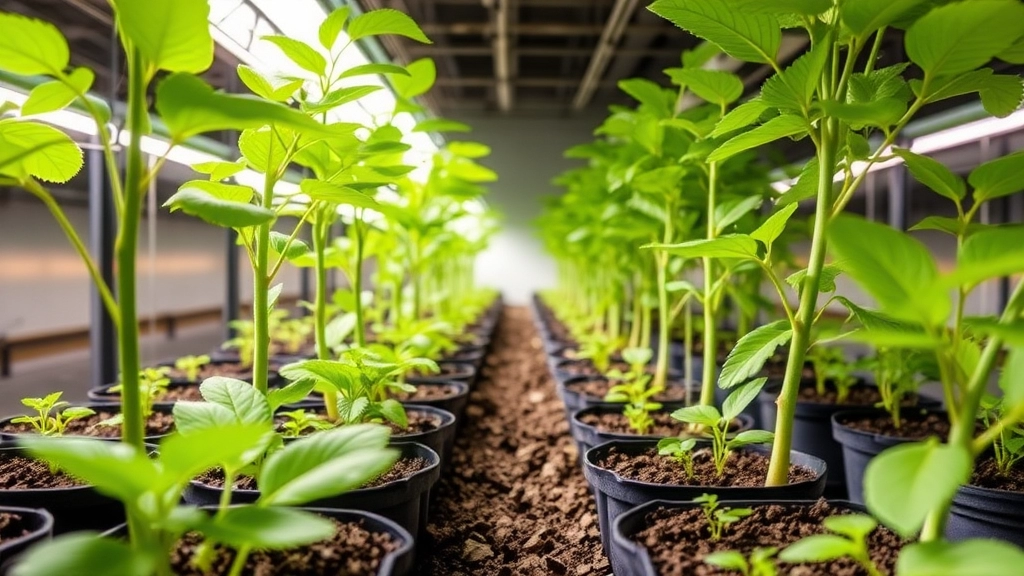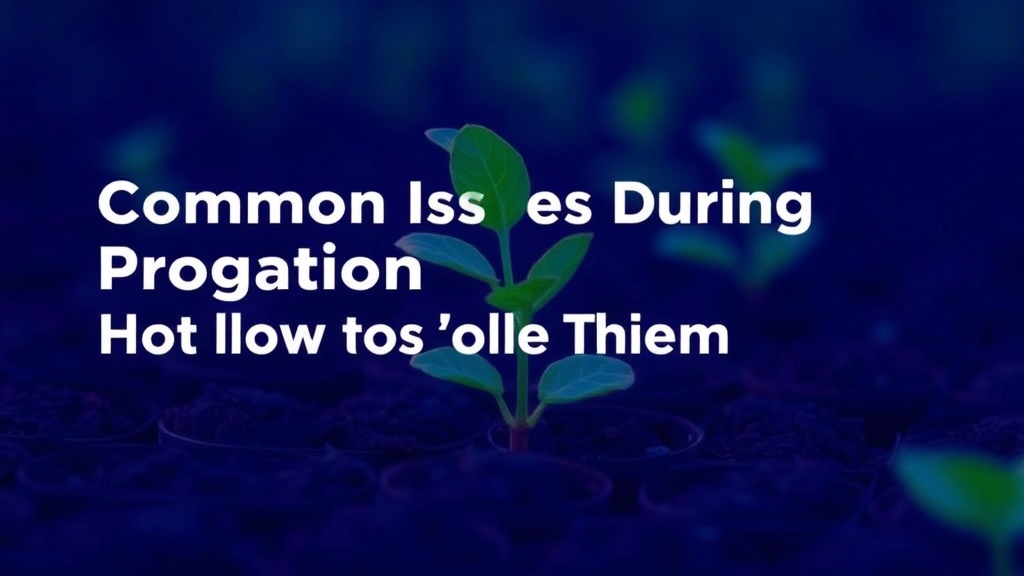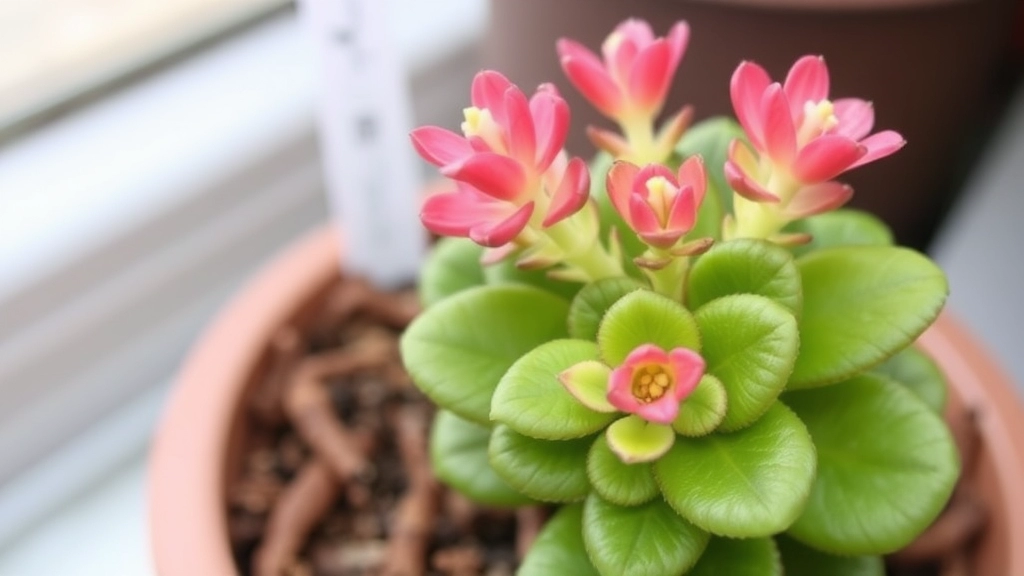Propagation of Kalanchoe Mother of Thousands
Looking to propagate your Kalanchoe Mother of Thousands? You’re in the right place. This unique succulent, known for its ability to produce plantlets along the edges of its leaves, makes propagation a breeze. I’ll guide you through the steps to ensure a successful propagation process, from harvesting plantlets to preparing the perfect soil.
Harvesting Plantlets
First, let’s talk about harvesting those tiny plantlets. These miniatures are your key to growing new plants. Once you have them, it’s all about creating the right environment. Proper soil preparation, potting techniques, and understanding the ideal light and temperature conditions are crucial.
Additional Tips
Stick with me, and we’ll also cover watering tips and how to tackle common issues during propagation. Let’s get started on your journey to a thriving collection of Kalanchoe Mother of Thousands.
How to Harvest Plantlets from Mother of Thousands
Are you wondering how to effectively harvest plantlets from your Mother of Thousands?
This unique succulent is known for its ability to produce numerous tiny plantlets along its leaf edges, making propagation an exciting and straightforward process.
Steps to Harvest Plantlets:
- Identify Mature Leaves: Look for leaves that are healthy and have developed plantlets. These are typically located at the edges of the leaves.
- Use Clean Tools: Ensure you have a pair of clean, sharp scissors or pruning shears. This helps prevent any potential disease transmission.
- Gently Cut the Plantlets: Carefully cut the plantlets from the leaf. Aim to leave a small section of the leaf attached to each plantlet, as this can help with initial rooting.
- Handle with Care: Be gentle while handling the plantlets, as they can be fragile. Place them on a clean surface to avoid any damage.
- Timing is Key: The best time to harvest is during the growing season, typically in spring or early summer. This ensures that the plantlets have the best chance of survival.
For more detailed information on how to care for this fascinating plant, check out our complete guide to caring for Kalanchoe Mother of Millions. Additionally, if you are interested in the health benefits associated with this plant, don’t miss our article on the top health benefits of Kalanchoe Mother of Thousands.
Preparing the Soil for Successful Propagation

So, you’ve decided to propagate your Mother of Thousands—exciting times ahead!
But have you thought about the soil?
The right soil mix is crucial for healthy plantlets.
Here’s how to get it just right:
Choosing the Right Soil Mix
- Well-Draining Soil: This is key. You want something that allows excess water to escape, preventing root rot. A cactus or succulent mix works wonders.
- Add Perlite or Sand: To improve drainage, mix in perlite or coarse sand. This helps keep the soil light and airy.
- Nutrient-Rich: While Mother of Thousands isn’t too fussy, a bit of organic matter can give your plantlets a boost. Consider adding compost or worm castings for that extra kick.
Soil pH
- Aim for a pH of 6-7: This range is perfect for most succulents. You can buy a soil pH tester to make sure you’re on point.
Preparing the Pot
- Clean Your Pots: If you’re reusing pots, make sure they’re clean. A quick wash with soapy water will do the trick. This prevents any unwanted pests or diseases.
- Add Drainage Holes: If your pot doesn’t have drainage holes, it’s time to drill some. Standing water is a no-go!
Mixing It All Together
- Combine Ingredients: In a large container, mix your chosen soil, perlite or sand, and organic matter. Aim for a ratio of about 2:1:1 (soil to perlite to organic matter).
- Fill Your Pots: Once mixed, fill your pots to about an inch from the top, leaving room for the plantlets.
After successfully harvesting the plantlets from the Mother of Thousands, the next crucial step is potting and planting them. This can often feel daunting for many, as the right techniques can significantly influence the growth and health of your new plants.
### Choosing the Right Pots
– Select pots with drainage holes to prevent waterlogging.
– Opt for small to medium-sized pots; plantlets thrive better in confined spaces initially.
– Consider using terracotta pots, which allow for better airflow to the roots.
### Soil Selection
– Use a well-draining potting mix, ideally a cactus or succulent mix.
– You can create your own mix by combining equal parts of potting soil, perlite, and sand to enhance drainage.
### Planting the Plantlets
1. **Prepare the Pots**: Fill the pots with your chosen soil, leaving about an inch of space at the top.
2. **Planting Depth**: Gently press the base of each plantlet into the soil, ensuring that the roots are covered but the leaves remain above the soil line.
3. **Spacing**: If planting multiple plantlets in one pot, ensure they are spaced about 2-3 inches apart to allow for growth.
4. **Firming the Soil**: Lightly press the soil around the plantlet to secure it in place, but avoid compacting the soil too tightly.
5. **Watering**: After planting, give the plantlets a light watering to settle the soil around the roots.
By following these steps, you’ll create an optimal environment for your plantlets to establish themselves. For more detailed care tips, you can check out the [complete guide to Kalanchoe tomentosa care](https://planthq.org/how-to-care-for-kalanchoe-tomentosa-complete-guide/) and additional [tips on growing Kalanchoe Blossfeldiana from seeds](https://planthq.org/how-to-grow-kalanchoe-blossfeldiana-from-seeds/).
Optimal Light and Temperature for Growth

As you transition from harvesting plantlets to ensuring their successful growth, it’s essential to consider their light and temperature needs.
Are you worried about providing the right environment for your newly propagated Mother of Thousands?
These plantlets thrive in specific conditions that can make or break their early development.
Light Requirements
- Bright, Indirect Light: Position your plantlets where they can receive bright, indirect sunlight. Direct sunlight can scorch the delicate leaves, while too little light can stunt their growth.
- South or East-Facing Windows: Ideal locations are south or east-facing windows. These spots offer the right balance of light throughout the day.
- Supplemental Lighting: If natural light is insufficient, consider using grow lights. LED lights can provide the necessary spectrum without overheating the plants.
Temperature Preferences
- Warm Environment: Mother of Thousands prefers temperatures between 20°C to 25°C (68°F to 77°F). This warmth promotes healthy growth and development.
- Avoid Cold Drafts: Keep your plantlets away from cold drafts or sudden temperature changes. Consistency is key for their survival and growth.
- Humidity Levels: Moderate humidity is beneficial, but avoid overly damp conditions. Too much humidity can lead to rot, especially in young plantlets.
Watering Tips for Newly Planted Plantlets
After successfully potting your plantlets, the next critical step is ensuring they receive the right amount of water. Many new gardeners worry about overwatering or underwatering their newly planted Mother of Thousands.
Common Issues During Propagation and How to Solve Them

So, you’ve taken the plunge and started propagating your Mother of Thousands, but things aren’t going as smoothly as you’d hoped.
What are the common issues?
- Wilting Plantlets
This is a classic sign of stress. It usually means they’re either too dry or too wet.
Solution: Check the soil moisture. If it’s too dry, give them a gentle drink. If it’s soggy, let them dry out before watering again. - Yellowing Leaves
If your plantlets are turning yellow, they’re not happy. This can be due to overwatering or nutrient deficiencies.
Solution: Adjust your watering schedule and consider using a diluted liquid fertiliser after a few weeks. - Root Rot
This sneaky issue can sneak up on you if you’re not careful.
Solution: Make sure your pots have good drainage. If you spot root rot, you might need to trim away the affected roots and repot in fresh, dry soil. - Pests
Watch out for little critters like mealybugs or aphids. They can be a real nuisance.
Solution: A gentle wipe with a damp cloth or a spray of insecticidal soap can help keep them at bay. - Insufficient Light
If your plantlets are stretching towards the light, they’re not getting enough.
Solution: Move them to a brighter spot, but avoid direct sunlight at first to prevent sunburn. - Temperature Fluctuations
Sudden changes in temperature can shock your plantlets.
Solution: Keep them in a stable environment, ideally between 18-24°C (65-75°F).
Dealing with these issues can feel overwhelming, but don’t sweat it!
Just remember, every plant is a little different, and it’s all about finding what works best for yours.
After successfully propagating your Mother of Thousands, it’s crucial to focus on its care to ensure it thrives in its new environment. You might be wondering how to best support your plantlets and the mother plant during this phase.
To keep your Mother of Thousands healthy post-propagation, consider the following:
– **Light Requirements:**
– Place your plant in bright, indirect sunlight.
– Avoid direct sunlight, which can scorch the leaves.
– **Temperature Control:**
– Maintain a warm environment, ideally between 20°C and 25°C.
– Protect the plant from cold drafts.
– **Watering Schedule:**
– Allow the soil to dry out between waterings.
– Water thoroughly but avoid waterlogging.
– **Fertilisation:**
– Use a balanced, diluted fertiliser every month during the growing season.
– Reduce feeding in winter when growth slows.
– **Pest Management:**
– Regularly check for pests like mealybugs and aphids.
– Use neem oil or insecticidal soap for treatment if necessary.
Keep an eye on both the mother plant and the new plantlets.
– **Signs of Healthy Growth:**
– New leaves emerging.
– Firm, vibrant foliage.
– **Signs of Stress:**
– Yellowing leaves.
– Wilting or drooping.
If you notice any issues, address them promptly to prevent further complications. For more detailed guidance, refer to the [complete guide to Kalanchoe Mother of Thousands care and propagation](https://planthq.org/complete-guide-to-kalanchoe-mother-of-thousands-care-propagation/).
As you nurture your Mother of Thousands, remember that this plant can become quite prolific.
– **Plan for Space:**
– Ensure there’s enough room for the plantlets to grow.
– Consider repotting if they outgrow their containers.
– **Propagation Cycle:**
– Be prepared for the next round of propagation as your plant continues to produce offsets.
For additional tips on maintaining healthy growth, you might find the [Kalanchoe Mother of Millions care guide](https://planthq.org/kalanchoe-mother-of-millions-care-guide-essential-tips/) helpful.
FAQs on Kalanchoe Mother Of Thousands Propagation
What type of soil is best for propagating Mother of Thousands?
The best soil for propagating Mother of Thousands is a well-draining mix. A cactus or succulent mix is ideal. You can also improve drainage by adding perlite or coarse sand. A bit of organic matter such as compost or worm castings can provide additional nutrients.
How should I prepare the pot for propagation?
Ensure your pots are clean to prevent pests or diseases. If reusing pots, wash them with soapy water. Additionally, make sure your pots have drainage holes to avoid standing water, which can lead to root rot.
What is the ideal soil pH for Mother of Thousands?
The ideal soil pH for Mother of Thousands is between 6 and 7. You can use a soil pH tester to ensure you’re within this range.
What light conditions do Mother of Thousands plantlets need?
Mother of Thousands plantlets thrive in bright, indirect light. South or east-facing windows are ideal. If natural light is insufficient, consider using LED grow lights to provide the necessary spectrum without overheating the plants.
What temperature is best for growing Mother of Thousands?
Mother of Thousands prefers a warm environment with temperatures between 20°C to 25°C (68°F to 77°F). Avoid cold drafts and sudden temperature changes, and maintain moderate humidity levels to prevent rot.
What should I do if my plantlets are wilting?
Wilting is usually a sign of stress, often due to improper watering. Check the soil moisture. If it’s too dry, water the plantlets gently. If it’s too wet, allow the soil to dry out before watering again.
Why are the leaves of my plantlets turning yellow?
Yellowing leaves can be due to overwatering or nutrient deficiencies. Adjust your watering schedule and consider using a diluted liquid fertilizer after a few weeks to provide necessary nutrients.
How can I prevent root rot in my plantlets?
To prevent root rot, ensure your pots have good drainage. If root rot occurs, trim away the affected roots and repot the plantlets in fresh, dry soil.
How can I deal with pests on my plantlets?
Common pests like mealybugs or aphids can be managed by wiping the plantlets with a damp cloth or using insecticidal soap. Regular monitoring and early intervention are key to keeping pests at bay.
What should I do if my plantlets are not getting enough light?
If plantlets are stretching towards the light, they need more light. Move them to a brighter spot but avoid direct sunlight initially to prevent sunburn. Supplemental grow lights can also be an effective solution.
How can I manage temperature fluctuations for my plantlets?
Keep your plantlets in a stable environment with temperatures ideally between 18-24°C (65-75°F). Avoid placing them near sources of sudden temperature changes, such as drafts or heating vents.
References
-
Soil Preparation Tips from Gardener’s Supply Company
-
The Spruce’s Guide to Soil and Potting Mix
-
Houseplant Light Requirements by Houseplants Expert
